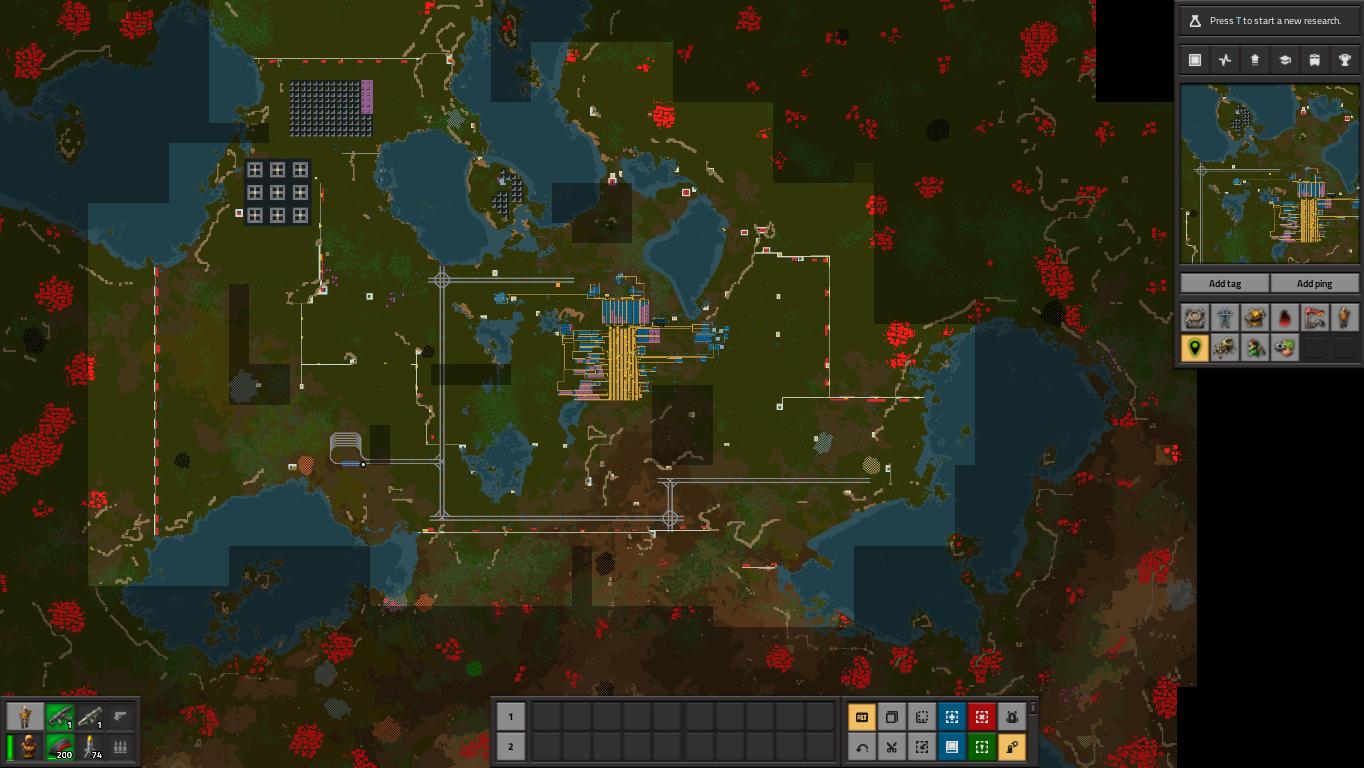

Videos on the other side are trivial to manipulate and it would be quite easy to shave a few seconds off without anybody noticing. The ingame timer has perfect precision and can be verified with an uploaded replay which is also smaller than a video. Maybe there are some options in there, that might give you an advantage that makes it unfun or not entertaining to watch? Someone with more insight might have to answer this. Probably because they might get disabled when 1. Other speedruns in this category would be time to make aliens attack you due to pollution. The time taken to get a specific achievment. Tired of not being able to reduce the pollution? Try the Air-Filter-Mod With this, you are able to use the pollution levels in your circuit network: Pollution detector. It gets more fun, the more people are doing it, so give it a try and submit your runs on speedrun. Also it's really fun I just want to create awareness to this kind of playstyle. It's a good mix between short and complex and still has much potential to beeing optimised. Even tho it is the run with the most people attempting it, it leaves something to be desired. But this run was only about 7 to 9 minutes. That's why he envisioned a category, that's faster to run. Factorio Community Map Time-Lapse - August 2016 We could then divide this max fluid flow between the consumers and kinda get a working results.Post by Jap2. Problem is that it only finds the maximum flow - the top limit of what we can push through. The most naive Ford-Fulkerson methodalthough theoretically infinite, could work super fast in our case. Since we are doing flow here, flow algorithms look like a candidate. However this would not address any of the other issues, and would add a significant amount of complexity to the currently quite simple handling of the fluidboxes, which we decided isn't worth the price.
FACTORIO SEEDS UPDATE
This is something Harkonnen tried a long time ago, to reduce indirection in the update of the fluidboxes.Įssentially, instead of each entity updating their own fluidbox, all fluidboxes in a segment would be kept in a singular part of memory, and then the simulation could be updated much faster. Before going to the current, simulation based model, I will shortly discuss other approaches that we have rejected. Though now with the new map editor and the ability to step through single ticks, it will be much easier to test in-game too.
FACTORIO SEEDS CODE
I get a very rough overview, as picture below, but most of the time I have to inspect the running code to see what is going on under the hood.
FACTORIO SEEDS SIMULATOR
The simulator loads the layout, connects pipes and then updates the system tick by tick on request. I will shortly describe how it works, before going to the model itself. The game is not at all practical for testing and debugging pipes, so I built a simple command line pipe simulator to develop the new system in.Īs I was attacking what I thought to be a simple problem, I started simple, and then had to refactor it several times whenever I realized that the problem is harder than what my simulator can support.

Fluid flows much quicker in the bottom pipe. There are other problems too, such as throughput loss over distance, fluids moving faster or slower depending on the entity update order, etc.

Second hand ashford drum carderĪs a result, nuclear power is unfeasible for megabases. Even though the formulas are simple, they are calculated for every connection in every fluidbox, which adds up.
FACTORIO SEEDS FULL
Only a fraction of the fluid is moved to its neighbour, so you rarely have a tank that is entirely full or entirely empty, which is a problem when you try to mix that with the integer based circuit network. The second issue players voice is the limited behavior of the elevation functions. The first of three main issues is that in junctions it behaves in a very random fashion.Īs a result, you might get recipients that are not getting any fluid where they obviously should be. Green column represents volume, Blue represents flow. It follows a simple elevation model, fluidboxes will try to equalise with their neighbours, which is quite fast to evaluate and solves the simple cases, but it does not address much outside of running through a straight pipe. Good thing is that they work - the fluids do get from A to B, in most cases anyway. There are couple mishaps in the current pipe system. Two people already tried to fix it and failed, who wants to be next? I am mostly working on the new GUIs, but still, the fact that summer is over and pipes are not done, kinda shows how simple fixing them is. Yeah, I know, right? Spring came and with it Twinsen, saying "Pipes suck. I will use this opportunity to talk to you about the exciting subject of pipes.


 0 kommentar(er)
0 kommentar(er)
